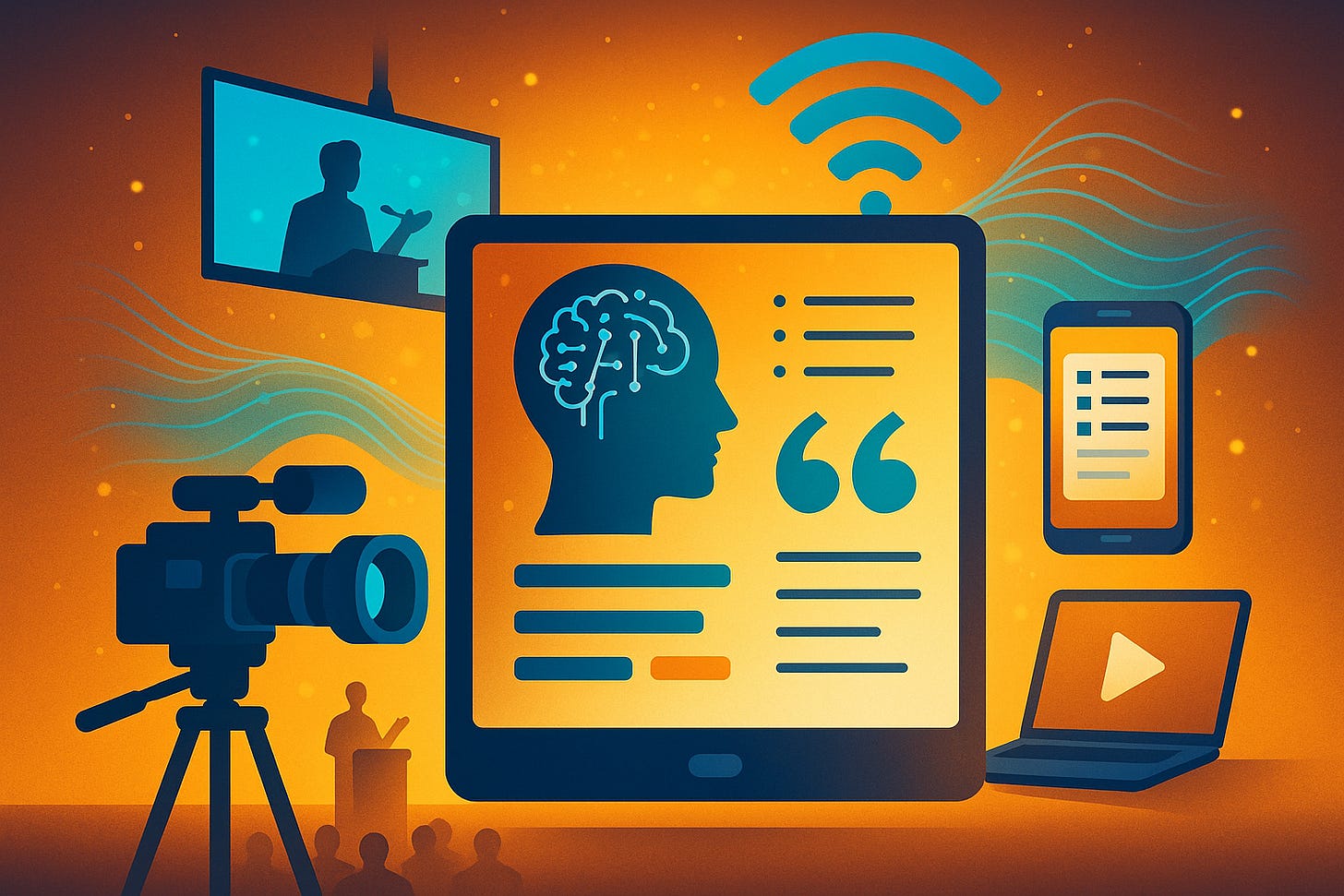Where event coverage is going right now
AI just killed the day-after conference report, giving in-the-moment ideas an afterlife
I’ll be attending a few conferences later this year where I’ve been asked to help with media coverage. It made me stop and think about how we’ve been doing it in recent years. And here’s the rub: conferences thrive on immediacy, not post-mortems.
People come to exchange ideas while they’re still fresh, yet coverage rarely keeps up. Reports are written afterwards, newsletters go out the next day and social posts trickle in once the dust has settled. By then, the energy has flown out the window.
Artificial intelligence has now reached a level of sophistication (and accuracy) that gives us the opportunity to close that gap. For media events and professional gatherings more widely, AI can make it possible to capture and circulate content as it happens. The tools are here and the steps are practical.
How I’ll approach my next event in practice
Most events already have microphones and recording in place for hybrid streaming or archives. Those same audio feeds can be routed into a transcription engine. Tools such as Whisper, Trint or AssemblyAI can produce live transcripts within seconds. Accuracy is now good enough that the output is usable without heavy editing.
The transcript becomes the raw material. AI models can condense the text into rolling abstracts (short, in-the-moment summaries that capture the essence of each session): a headline, three bullet points and a highlighted quote. Updates can be generated every few minutes so attendees know what they’re missing in another room, while remote followers can see how the debate is evolving almost live.
Once generated, these micro-summaries can be pushed across multiple channels. An event app can notify delegates of “Top three takeaways so far” from a session they skipped. Screens in the venue can display a live ticker of ideas. Communications teams can queue short LinkedIn or X posts directly from the AI draft.
At the close of each session, the same system can generate a 250- to 400-word summary. This is enough to be used as a live blog entry, a news brief or a social update. By evening, all the session abstracts can be compiled into a “Day One Highlights” digest. Delegates receive an email before dinner that captures the main points and is ready to share with colleagues.
Human editors must remain part of the process. They scan the drafts, trim awkward phrasing, add context and choose which quotes deserve wider circulation. But the slog of transcription and condensation has been handled automatically. The workflow is faster and the barrier to on-the-spot coverage has been removed entirely.
Why this will blow your (and your sponsors’) minds
Too often I’ve seen the hard work behind event coverage go unnoticed. Once the lights dim, most insights and debates vanish. In-the-moment coverage amplifies your content and makes speakers (and sponsors) smile. A few slides might be shared, a press release issued, maybe a short tweet thread, but then it’s gone.
AI can change that, allowing event content to live beyond the stage in multiple formats, instantly.
For sponsors and speakers, the benefit is obvious: their messages circulate more widely and reach beyond the room. For delegates, catching up on missed sessions while still at the venue is invaluable. For organisers, the conference gains a digital afterlife that extends its relevance and reach.
It also alters the tempo. Coverage is no longer a post-mortem. It becomes a current running through the event itself. Instead of waiting for a newsletter the next morning, the audience experiences an unfolding of ideas, captured and shared while they’re still alive.
And it’s easy
The requirements are modest: a reliable internet connection, audio feeds routed into transcription software, an AI summarisation tool and an editor to review and approve the output. None of this requires exotic equipment or prohibitive cost.
What matters is the shift in mindset. An event should be seen not only as a meeting but as a generator of live content. Treating it that way ensures that ideas do not disappear into thin air but circulate widely, fast.
The immediacy and energy of the stage should be matched by the immediacy of its coverage. That’s the future of media events and AI can make it happen.


